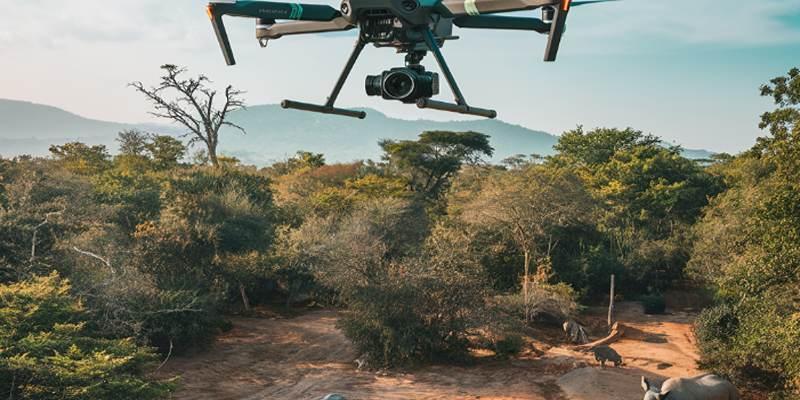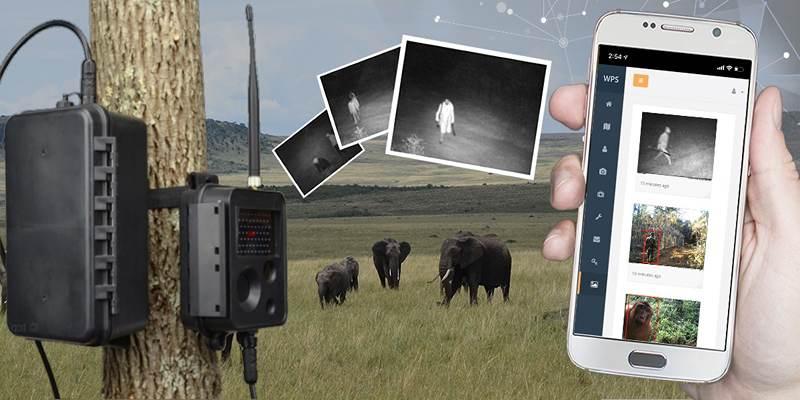Wildlife conservation has long been a crucial part of protecting biodiversity and maintaining the balance of ecosystems. Unfortunately, many species around the world are facing the threat of extinction due to factors like habitat loss, poaching, climate change, and pollution.
While traditional methods of wildlife conservation have provided some help, artificial intelligence (AI) has emerged as a powerful tool to make these efforts more effective and efficient. This post will explore how AI is playing a significant role in tracking endangered species and improving overall wildlife conservation.
The Role of AI in Tracking Endangered Species
One important part of protecting wildlife is keeping track of where and how rare species move and act. It is hard for conservationists to protect species effectively without accurate, real-time statistics. Using AI along with GPS tags, camera traps, drones, and other tools is making it easier to keep an eye on animals that are in danger.
AI systems process vast amounts of data, enabling conservationists to track animals in the wild without being physically present. This non-invasive method provides an invaluable tool for monitoring species in their natural habitats while minimizing the impact of human presence on their behavior.
How AI Tracks Endangered Species:
- GPS collars: A lot of animals that are in danger are given GPS tags that send information about where they are. AI algorithms look at this information to give real-time information about the animal's habits, migration patterns, and preferred habitats. It lets scientists keep an eye on big groups of animals over large areas without actually being there.
- Camera traps: AI-powered camera traps are strategically placed in wildlife habitats to capture images and videos of animals. Advanced AI algorithms can analyze these visuals and identify specific species, count the number of animals in the frame, and detect any unusual behavior, such as the presence of poachers or other threats.
- Drones: Drones equipped with AI technology are used to capture aerial images of animal populations. By analyzing these images, AI systems can detect specific species, monitor the health of their habitats, and track their movements across large, inaccessible areas.
Benefits of AI in Tracking Species:
- Non-intrusive monitoring: Unlike traditional methods, AI allows for remote and non-intrusive monitoring of animals. It reduces human interaction with the species, ensuring minimal disruption to their natural behavior.
- Real-time data: AI systems can provide instant updates, enabling conservationists to react swiftly to any changes in an animal's behavior or environment.
- Improved accuracy: By processing large volumes of data, AI improves the accuracy of species identification and movement tracking, which is often prone to human error when done manually.
Combatting Poaching with AI

Poaching remains one of the biggest threats to endangered species, particularly in regions where wildlife habitats overlap with human settlements. AI is playing a pivotal role in detecting and preventing poaching activities, enabling quicker responses to threats and reducing human-wildlife conflict.
AI-Powered Anti-Poaching Strategies:
- Predictive patrolling: By analyzing data such as animal movement patterns, human activity, and environmental conditions, AI can predict areas where poaching is likely to occur. It allows park rangers to focus their patrolling efforts on high-risk areas, improving the efficiency of anti-poaching operations.
- Wildlife monitoring with drones: Drones equipped with AI technology can cover large areas, providing real-time surveillance of wildlife habitats. They can detect human movement, capture images, and even track the movements of specific animals. Drones equipped with thermal imaging can also detect poachers who might be hidden by dense vegetation.
Protecting and Monitoring Wildlife Habitats
The protection of endangered species is intrinsically linked to the conservation of their habitats. With human activity threatening many of the world’s ecosystems, AI is helping to monitor and safeguard these critical areas by analyzing environmental data.
How AI Protects Habitats:
- Environmental monitoring: AI can process satellite imagery to track changes in habitats, such as deforestation, urbanization, or changes in land use. This data helps conservationists identify areas where ecosystems are being degraded and take immediate action to protect them.
- Predicting habitat threats: AI systems can analyze patterns of environmental change to predict potential threats to wildlife habitats, such as illegal logging, mining, or land encroachment. By identifying these threats early, conservationists can deploy protection measures before irreversible damage is done.
Benefits of AI in Habitat Protection:
- Efficient monitoring: AI allows conservationists to monitor large, remote habitats more effectively by analyzing satellite images and environmental data.
- Faster identification of threats: AI systems can quickly detect changes in habitats, such as deforestation or pollution, which can have immediate consequences on the survival of endangered species.
Real-World Examples of AI in Wildlife Conservation

AI is already being used successfully in various wildlife conservation efforts. Here are a few notable examples:
- The Wildlife Protection Solutions (WPS) Project: In Africa, WPS uses AI-powered cameras and drones to monitor protected areas and detect poaching activities. By utilizing these technologies, the organization has been able to prevent numerous poaching attempts and track endangered species more effectively.
- Elephant Listening Project: This project uses AI to analyze audio recordings from forests to monitor the presence and movements of elephants. The system is able to detect the unique sounds made by elephants, helping conservationists track their populations and protect them from threats such as poaching and habitat loss.
- AI for Coral Reef Protection: Coral reefs are vital for marine biodiversity, but they are threatened by climate change and human activity. AI technology is used to monitor coral health and detect early signs of bleaching, which allows conservationists to take action before extensive damage occurs.
Conclusion
Artificial intelligence is transforming the way you approach wildlife conservation. By enhancing the tracking of endangered species, combatting poaching, and protecting habitats, AI is helping conservationists work more efficiently and effectively. AI-powered tools, such as smart surveillance systems, predictive patrolling, and environmental monitoring, are proving invaluable in the fight to protect endangered species and preserve biodiversity. As the technology continues to evolve, AI will undoubtedly play an even more significant role in wildlife conservation efforts worldwide.
